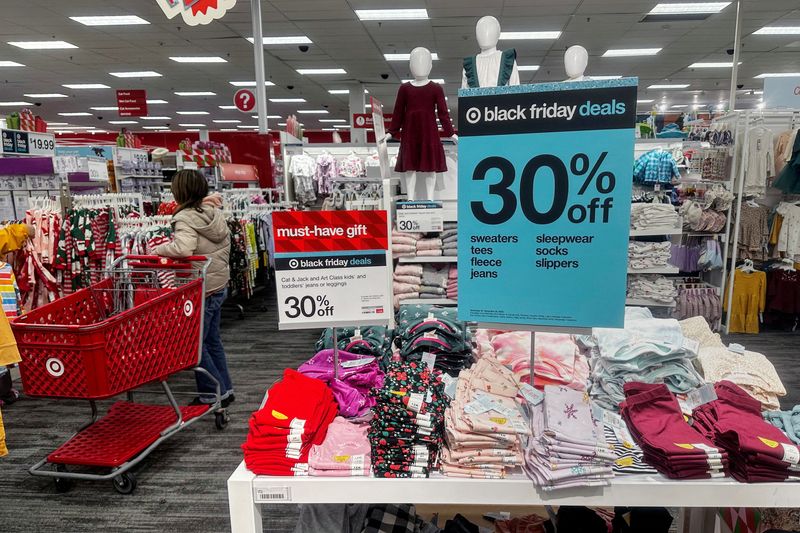NEW YORK (Reuters) - Heading into holidays some expect to disappoint, Wall Street investors like Goldman Sachs are using new ways to monitor shoppers' actions and intentions to help determine the season's winners and losers.
They are tapping into the quickly evolving field of "alternative data" to help them predict retailer performance and provide an advantage over other investors.
Historically, Wall Street relied on traditional data like earnings reports and company filings - with an assist from their well-seasoned gut instincts.
Now they can buy intel on everything from credit-card swipe data to consumer sentiment reports, from an ever-growing number of providers.
One example is data firm HundredX, which earlier this year began selling its shopper-sentiment data to Goldman Sachs. The bank uses the information in equity research and investment banking, according to a Goldman spokesperson.
Founded by former Goldman partner Robert Pace in 2012, HundredX partners with non-profits like Habitat for Humanity to measure thousands of individuals' future purchase intentions, claiming to get an early read on future financial trends.
Supporters of the non-profits who partner with HundredX are asked to fill out surveys about their experiences with the retailers or brands they use, including how likely they are to revisit them. The firm donates $2 for every response it gets.
Michael Finnegan, CEO of an alt-data aggregation platform called Eagle Alpha that connects data buyers with sellers, said there were about 100 alt-data providers in the industry's early days in the mid-2010s. Now there are 2,000 around the globe.
They provide credit card swipe data that reveals what different classes of consumers are buying; insights about consumer behavior based on cell phone geolocation; pre-holiday consumer sentiment derived from surveys or by scraping social media sites like Reddit.
The data helps investors glean information they couldn't have a few years ago. For instance, HundredX CEO Pace said, measuring a consumer's shopping experience shows that "the sale is not the outcome." Numbers may reflect a sale, he said, but if a customer leaves a store fuming after a bad experience, she isn’t likely to come back.
In the big-box retail universe, HundredX surveys showed last spring that shoppers seemed less likely to return to Target (NYSE:TGT) in the near term than Walmart (NYSE:WMT). But in recent weeks, Pace said, future intent to shop at Target has been rising. “We see an inflection up," he said. "That’s a contrarian view today."
Indeed, shares of Target slid about 20% since the Minneapolis-based retail chain forecast flat holiday-quarter sales on Wednesday.
AlphaROC, founded three years ago, combines data sets with interviews with roughly 3,000 people in the U.S. per day to gauge consumer intentions for the next three to six months, selling the information to asset managers.
Data firm Facteus uses credit card swipe data to update its retail sales outlook from week to week, rather than wait for the U.S. Commerce Department's monthly estimates. In the week ending November 9, the firm saw signs of "a dramatic turnaround" at TikTok Shop, the e-commerce arm of Beijing-based ByteDance’s TikTok social media platform, with a 16.8% increase in average spend.
Some retail executives are annoyed with what they consider a systemic problem. Data ubiquity is "frustrating,” said Dave Powers, board member and former CEO of Deckers Brands, which owns Hoka sneakers and Ugg slippers. Datasets like credit-card swipes can be taken out of context to paint inaccurate pictures of the state of business, Powers said in a phone interview.
But even retailers who scoff at the use of data by their investors are using it themselves, to measure their own performance. “They recognize that the horse has bolted from the barn,” said Mark Mathews, head of research at the National Retail (NYSE:NNN) Federation trade group. “If it’s out there, you might as well use it."
HundredX's Pace said that as an independent data firm, its relationship with retailers can be a little “love-hate.”
“(Retailers) have a plan,” he said, “and sometimes our data shows their plan does or doesn’t look so good.”
Placer.ai uses geolocation data to show clients patterns in how people move, so that a retailer or investor could theoretically tell if a billboard was driving people to a store. Social media site Reddit Inc held a webinar ahead of this year’s holiday season to show retailers how it can measure when online conversations about holiday shopping peak, compared to conversations about holiday travel, food, parties or decorating.
Firms like HundredX and Facteus confirm that an uptick in investor clients is driving growth. HundredX has tripled its number of investor clients over the last 18 months, according to CEO Pace. Facteus' revenue has grown 300% since the start of 2023, driven in large part by investors, says Co-Founder Jonathan Chin.
Lombard Odier Investment Managers, a $73 billion asset manager based in Switzerland, is one of many financial firms leaning into alt-data. In July, it launched DataEdge, an investment strategy that merges myriad indicators – like credit-card swipes, digital receipts, web traffic, mobile app clicks and geolocation data – to identify consumer trends and trade stocks using computers.
The goal, said Laurent Joue, the firm's head of systematic alternatives, is to anticipate earnings revisions ahead of public announcements, tracking sales, revenue and customer engagement.

The strategy's accuracy has been close to 70% so far, Joue said.
(This story has been refiled to remove the reference to Goldman Sachs declining comment in paragraph 7)